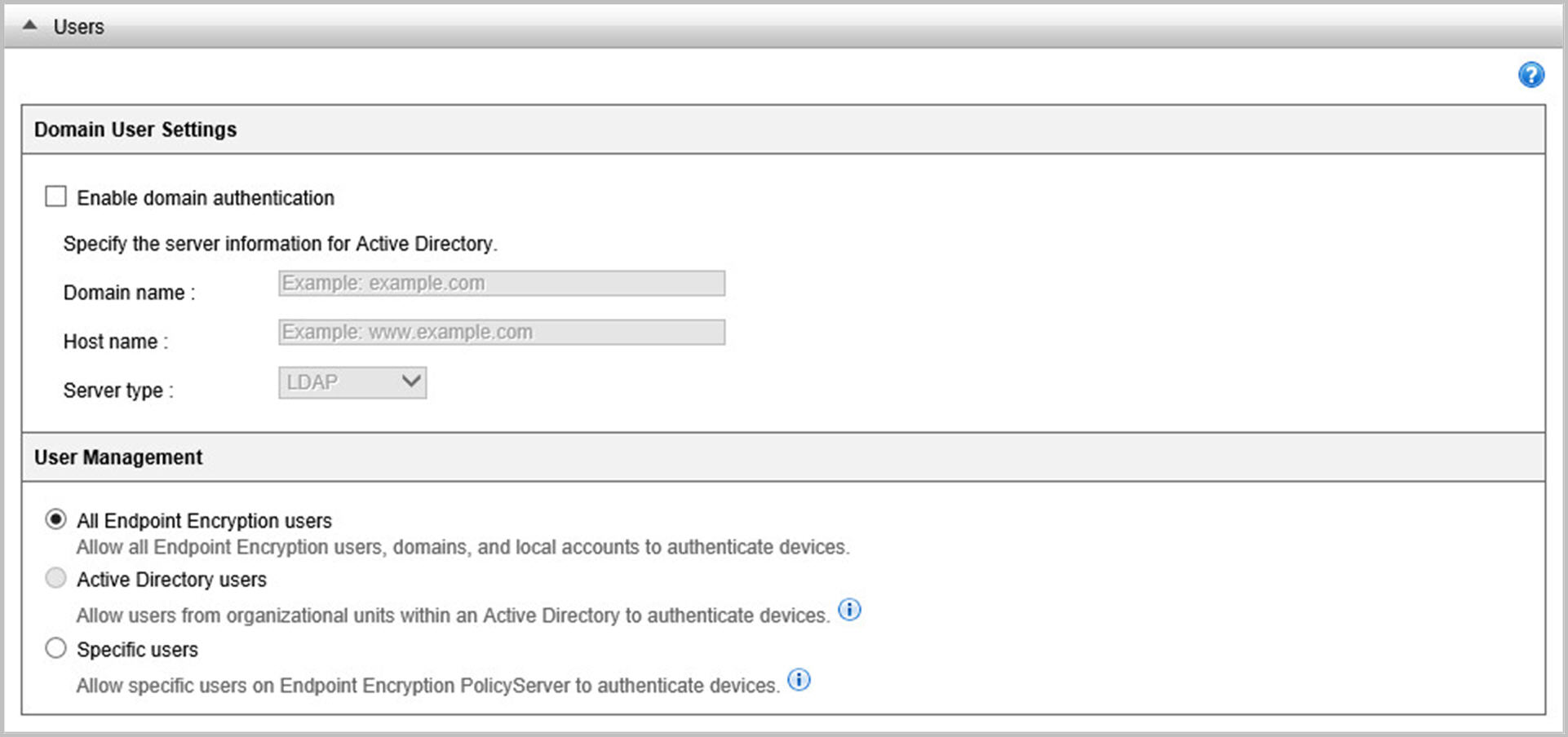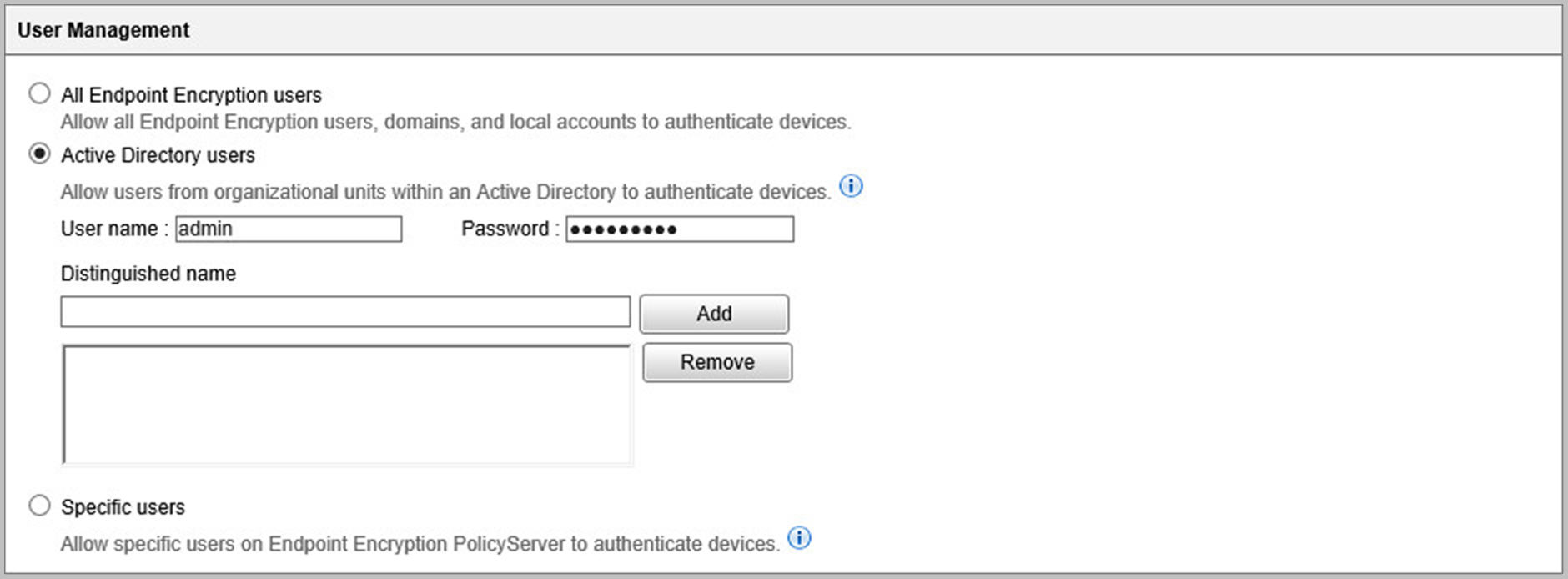Procedure
- Create a new Endpoint Encryption policy.See Creating a Policy.
- Click Users.The Users policy rules settings appear.

Endpoint Encryption Users Policy Rules - If users require domain authentication, select Enable domain
authentication under Domain User
Settings.If you selected Enable domain authentication, specify the server information for your Active Directory (AD) account.
- Configure the AD domain name.
- Configure the host name of the AD server.
- Select the server type:
-
LDAP
-
LDAP proxy
-
- Under User Management, configure user access.
Option Description All Endpoint Encryption usersAllow all users, domain and local accounts, to authenticate Endpoint Encryption devices.Active Directory usersAllow users from organizational units (OUs) within an AD to authenticate Endpoint Encryption devices.
Note
Select Enable domain authentication to enable the Active Directory users option.To configure domain authentication, see Active Directory Synchronization.Select specific usersSpecify which already added Endpoint Encryption users can authenticate to managed endpoints.
Note
In order to select specific users with this option, you must populate the user list. Add OUs with the Active Directory users option or add users with the Endpoint Encryption Users widget.For more information about the Endpoint Encryption Users widget, see Endpoint Encryption Users. - If you selected Active Directory users, add OUs to the
policy by their distinguished name.After selecting Active Directory users, the following additional options appear:

Option Description User nameSpecify your Active Directory user name.PasswordSpecify your Active Directory password.Distinguished nameSpecify each OU by its sequence of relative distinguished names (RDN) separated by commas.Example: OU=TW, DC=mycompany, DC=comAfter specifying the OU distinguished name, click OK.
Important
Endpoint Encryption supports up to 12 OUs per policy.

